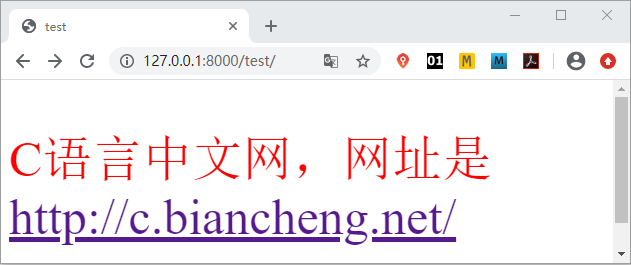-
Django模板加载与响应
在前文章节《Django模板系统》中,我们对 Django 的模板系统有了初步的认识,在本章我们将重点讲解 Django 的模板语言。
Djano 的模板系统将 Python 代码与 HTML 代码解耦,动态地生成 HTML 页面。Django 项目可以配置一个或多个模板引擎,但是通常使用 Django 的模板系统时,应该首先考虑其内置的后端 DTL(Django Template Language,Django 模板语言。
1. 什么是模板
在 Django 中,模板是可以根据字典数据动态变化的,并且能够根据视图中传递的字典数据动态生成相应的 HTML 网页。Django 中使用 Template 来表示模板,Template 对象定义在 django/template/base.py 文件中,它的构造函数如下所示:
def __init__(self,template_string,origin=None,name=None,engine=None)
它只有一个必填的参数:字符串表示的模板代码。
1) 模板的配置
首先按照
BookStore/templates路径创建模板文件夹 templates,在 settings.py 配置文件中有一个 TEMPLATES 变量,如下所示:TEMPLATES = [ { 'BACKEND': 'django.template.backends.django.DjangoTemplates', 'DIRS': [], #指定模板文件的存放路径 'APP_DIRS': True, #搜索APP里面的所有templates目录 'OPTIONS': { 'context_processors': [ #context_processors 用于配置模板上下文处理器 'django.template.context_processors.debug', 'django.template.context_processors.request', 'django.contrib.auth.context_processors.auth', 'django.contrib.messages.context_processors.messages', ], }, }, ]其中每一项释义如下所示:
- BACKEND : Django默认设置,指定了要是用的模板引擎的 Python 路径;
- DIRS : 一个目录列表,指定模板文件的存放路径,可以是一个或者多个。模板引擎将按照列表中定义的顺序查找模板文件;
- APP_DIRS : 一个布尔值,默认为 Ture。表示会在安装应用中的 templates 目录中搜索所有模板文件;
- OPTIONS : 指定额外的选项,不同的模板引擎有着不同的可选参数,例如 context_processors 用于配置模板上下文处理器,在使 RequestContext 时将看到它们的作用。
2) 修改settings配置文件
修改 settings.py 文件,设置 TEMPLATES 的 DIRS 值来指定模板的搜索目录为“templates”如下所示:
'DIRS': [os.path.join(BASE_DIR, 'templates')]
2. 模板的加载与响应方式
那么我们如何加载模板并响应给浏览器呢?在前文《Django模板系统》一文,我们已经介绍了一种 render 的方法,其实这里可以使用的方式主要有两种,在本节我们将更加全面的讲解它们。
方式一:通过 loader 获取模板,通过 HttpResponse 进行响应
from django.template import loader # 1.通过loader加载模板 t = loader.get_template("模板文件名") # 2.将t转换成HTML字符串 html = t.render(字典数据) # 3.用响应对象将转换的字符串内容返回给浏览器 return HttpResponse(html)方式二:使用 render 方法直接加载并响应模板
from django.shortcuts import render return render(request,'模板文件名', 字典数据)
下面我们对上述两种方式分别来说明:
#方式一 from django.template import loader # 导入loader方法 from django.shortcuts import render #导入render 方法 def test_html(request): t=loader.get_template('test.html') html=t.render({'name':'c'})#以字典形式传递数据并生成html return HttpResponse(html) #以 HttpResponse方式响应html #方式二 from django.shortcuts import render #导入reder方法 def test_html(request): return render(request,'test.html',{'name':'c'})#根据字典数据生成动态模板然后在 templates 目录下创建 test.html 文件并在其中添加如下代码:
<p style="font-size:50px;color:red">{{name}},网址是<a href="http://c.biancheng.net/">http://c.biancheng.net/</a></p>提示:{{name}} 属于 django 模板语言的语法,代表一个变量,在后续章节我们会讲解。
最后在 BookStore/urls.py 文件的 urlpatterns 列表中为视图函数 test_html() 配置路由映射关系,如下所示:
urlpatterns = [ path('admin/', admin.site.urls), path('test/',views.test_html), ]从上述过程我们不难体会 Django 视图函数的实现流程。首先定义了视图函数 test_html(),然后在 templates 文件夹中新建了 test.html 文件,使用它作为模板文件;最后我们配置了视图函数的路由映射关系,以上步骤完成后,我们可以通过访问 127.0.0.1/test 得到如下展示页面:
